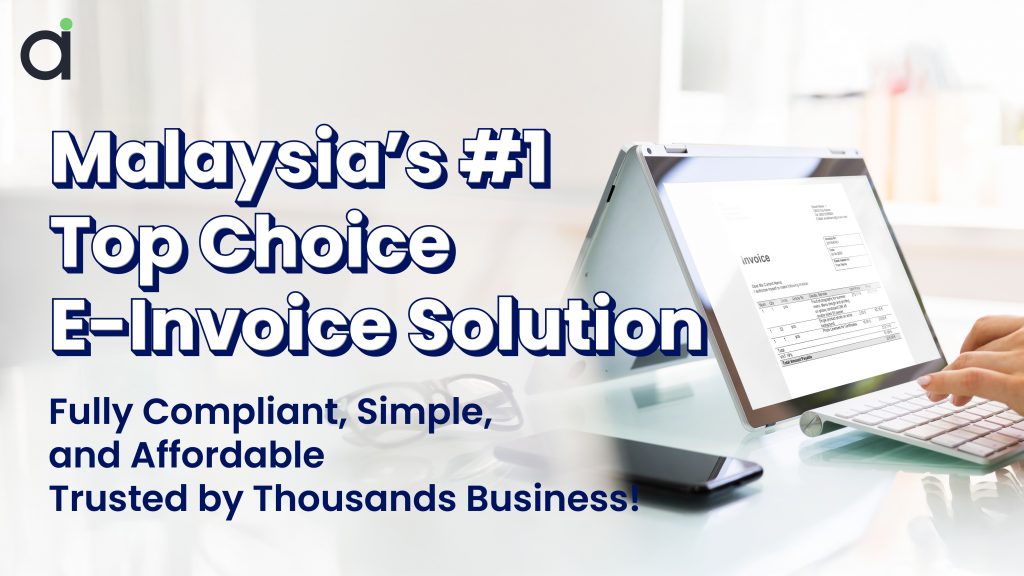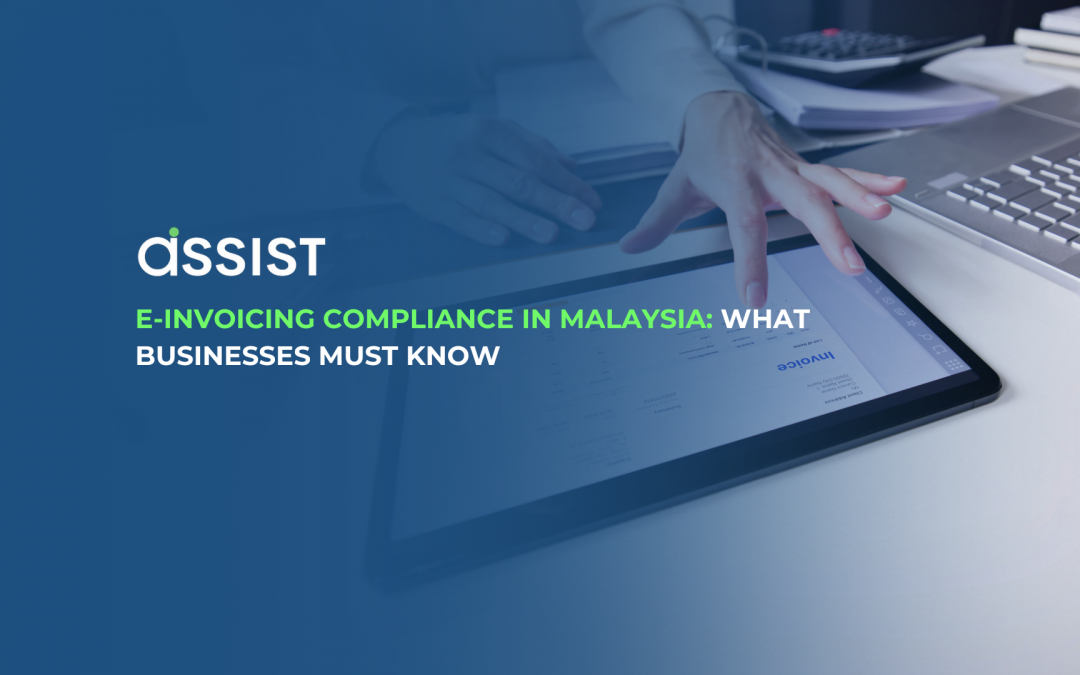The shift toward e-invoicing is gaining momentum in Malaysia, and SMEs and solopreneurs must prepare for this digital transformation. With the government pushing for mandatory e-invoicing, businesses need to understand compliance requirements to avoid penalties and ensure smooth financial operations.
In this guide, we’ll break down everything SMEs and solopreneurs need to know about Malaysia’s e-invoicing regulations, including key deadlines, compliance steps, and how to transition smoothly.
What is E-Invoicing Compliance?
E-invoicing compliance refers to the legal and technical requirements businesses must follow when issuing, receiving, and storing invoices digitally. The goal is to create a standardized and transparent invoicing system that integrates directly with the tax authorities, reducing fraud, improving tax reporting, and making business transactions more efficient.
With compliance, all invoices must be:
✅ Digital & structured (following a specific e-invoice format)
✅ Reported to LHDN (Inland Revenue Board of Malaysia) in real-time
✅ Stored securely for audit purposes
For SMEs and solopreneurs, adapting to these changes early ensures business continuity, faster payments, and fewer tax-related issues.

Malaysia’s E-Invoicing Regulations & Deadlines
The Malaysian government has revised its e-invoicing implementation timeline to facilitate a smoother transition for businesses. The updated rollout consists of four phases:
| Business Annual Revenue | Mandatory E-Invoicing Deadline |
|---|---|
| RM100 million & above | 1 August 2024 |
| RM25 million – RM100 million | 1 January 2025 |
| RM500,000 – RM25 million | 1 July 2025 |
| Up to RM500,000 | 1 January 2026 |
Each phase includes a six-month relaxation period, allowing businesses to adapt to the new system without penalties.
Exemption for Small Traders:
Businesses with annual sales below RM150,000 are exempt from mandatory e-invoicing, benefiting over 700,000 small traders.
Government Support Initiatives:
📌 Free access to the MyInvois portal for e-invoicing submissions.
📌 A mobile app for tax submission to simplify the process.
📌 Nationwide training conducted by LHDN to help businesses transition smoothly.
These measures ensure that businesses of all sizes have the necessary time and resources to comply.
How SME & Solopreneurs Can Prepare
Instead of waiting until the last minute, here’s how you can prepare for e-invoicing compliance:
1️⃣ Understand the Requirements
- Learn about the required invoice format, data points, and reporting process.
- Stay updated on announcements from LHDN regarding e-invoicing guidelines.
2️⃣ Choose a Compliant E-Invoicing Solution
- Use an LHDN-compliant e-invoicing software like Assist.biz.
- Ensure the platform supports real-time submission, tax calculations, and secure storage.
3️⃣ Digitize Your Invoicing Process
- Shift from manual invoices (paper/PDFs) to structured e-invoices.
- Automate invoice creation, tracking, and tax reporting to save time.
4️⃣ Integrate with Accounting & Business Tools
- Choose a solution that syncs with your accounting software, payment gateways, and LHDN’s system.
5️⃣ Train Your Team or Learn the System
- If you have employees, educate them about the new invoicing workflow.
- For solopreneurs, take time to familiarize yourself with the platform.
Common Challenges & How to Overcome Them
✅ Technical Difficulties
- Challenge: SMEs may struggle with software integration.
- Solution: Use a user-friendly, cloud-based e-invoicing tool like Assist.biz to simplify the process.
✅ Cost Concerns
- Challenge: Some businesses worry about high costs.
- Solution: The government offers free access to the MyInvois portal and mobile app. Additionally, many e-invoicing platforms offer affordable plans for SME.
✅ Lack of Awareness
- Challenge: Many small business owners aren’t aware of e-invoicing deadlines.
- Solution: Start preparing early, and follow updates from LHDN and trusted sources like Assist.biz.
Conclusion
E-invoicing compliance is no longer a choice—it’s a necessity for all businesses in Malaysia. Whether you’re an SME or a solopreneur, adopting e-invoicing now ensures smooth financial operations, faster payments, and full compliance with tax laws.
Instead of waiting until the deadline, take the first step today. Explore Assist.biz’s e-invoicing solution and get your business ready for the digital era.

Frequently Asked Questions (FAQ)
What is e-invoicing, and why is it mandatory in Malaysia?
E-invoicing is a digital method of issuing and receiving invoices in a structured format that is reported to the Inland Revenue Board of Malaysia (LHDN) in real time. The government is implementing e-invoicing to enhance tax compliance, reduce fraud, and improve efficiency in business transactions.
When does my business need to comply with e-invoicing?
The e-invoicing rollout follows these phases:
| Business Annual Revenue | Mandatory E-Invoicing Deadline |
|---|---|
| RM100 million & above | 1 August 2024 |
| RM25 million – RM100 million | 1 January 2025 |
| RM500,000 – RM25 million | 1 July 2025 |
| Up to RM500,000 | 1 January 2026 |
Each phase includes a six-month relaxation period, allowing businesses to adapt without penalties.
Are all businesses required to adopt e-invoicing?
No. Businesses with annual sales below RM150,000 are exempt from mandatory e-invoicing, benefiting over 700,000 small traders. However, they can voluntarily adopt e-invoicing if they choose.
What are the benefits of e-invoicing for SMEs and solopreneurs?
✅ Faster payments and better cash flow management
✅ Reduced invoicing errors and disputes
✅ Automated tax reporting and compliance with LHDN
✅ Cost savings on paper, printing, and storage
✅ Better record-keeping and easier audits
How can I issue e-invoices?
You can issue e-invoices using:
- The government’s free MyInvois portal (for basic compliance needs).
- An LHDN-approved e-invoicing solution like Assist.biz, which integrates with accounting tools and automates invoicing.
Will there be penalties for late adoption?
During the six-month relaxation period after each deadline, businesses can adjust to the new system without penalties. However, after this period, failure to comply may result in fines and tax-related complications.
How can I prepare my business for e-invoicing compliance?
Start preparing by:
- Learning about the requirements and deadlines for your business category.
- Choosing an LHDN-compliant e-invoicing solution like Assist.biz.
- Digitizing your invoicing process and integrating it with your accounting system.
- Attending training sessions by LHDN or exploring online guides on e-invoicing.

Recent Comments